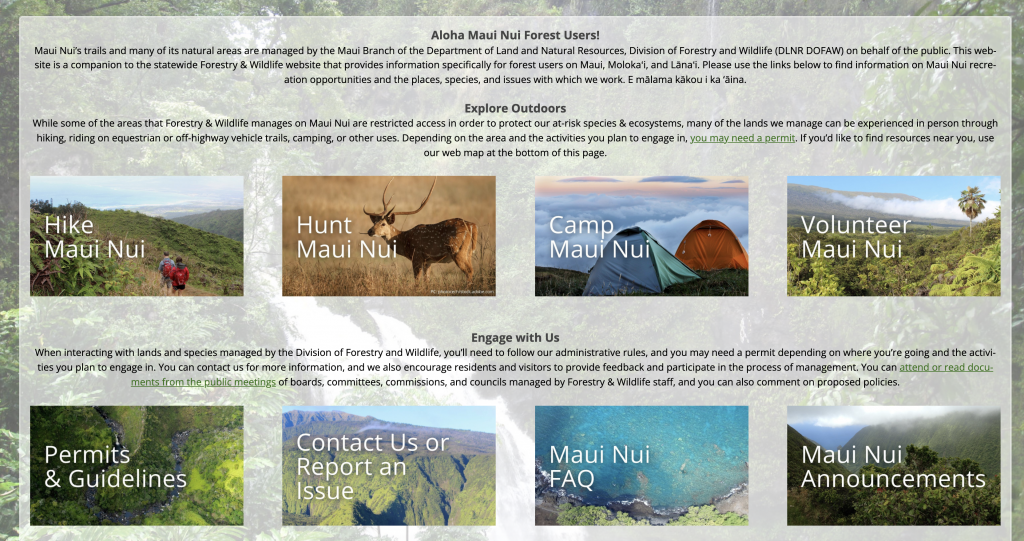New ʻIsland Hubsʻ launched for forestry and wildlife information

A number of new web and social media content managed by the DLNR Division of Forestry & Wildlife gives users access to island-specific information on trails, hunting, ecosystem protection and management of plants and wildlife.
The newly redesigned DOFAW website features a number of user-focused updates, including the ability to filter statewide information by island. To island-specific information, go to DOFAW’s main hub and click on the menu option for “Island Hubs.”
“In Hawaiʻi, it helps to be local,” said DOFAW in a public announcement. “That’s the driving principle behind new web and social media content.”
DOFAW is also developing community-focused social media accounts to highlight local opportunities for volunteering and to celebrate the plants, animals and areas that make each island unique. These accounts, including the newly launched O’ahu DOFAW and Kaua’i DOFAW accounts on Instagram, are local complements to the statewide, department-wide Hawai’i DLNR accounts. Accounts focusing on forest resources on Hawaiʻi Island or Maui Nui are under discussion.
“Experiencing nature is a very personal thing,” said David Smith, DOFAW Administrator. “Like all our conservation work, it’s rooted in place. We want our outreach to reflect that, and to help people learn and care about what is around them.”
DOFAW has also launched new online learning tools that allow exploration from home or from the classroom, including:
- A video hub for documentaries and other videos by DLNR and partners
- A growing collection of virtual tours using 360˚ photos and videos of sites including Kaʻena Point Natural Area Reserve, Kawainui Marsh Wildlife Sanctuary, and more
- Native species profiles on snails, insects, and over 70 new native bird pages integrated with streamable audio of bird songs
- Interactive web maps linking to information on public lands managed by the Division, including Forest Reserves, Natural Area Reserves, Wildlife Sanctuaries, Nā Ala Hele trails, and Public Hunting Areas.
“This is also an equity and accessibility issue for us,” said Smith. “We want to remove some of the barriers people may have to experiencing public resources.”









